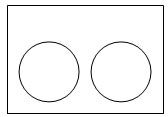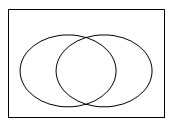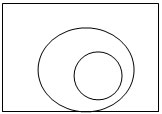| Social Studies – Grade 6 | Close this window |
 |
Exploring the Forms of Democracy (OCI) > The Merits of Direct and Representative Democracies (CC) |
  |
What's this? |
The Merits of Direct and Representative Democracies
- Assess the merits of direct and representative democracies.
- Write a persuasive letter recommending either a direct, representative or blended system.
|
||||||||||||||||||
 |
||||||||||||||||||
Suggested ActivitiesStudents consider the merits of direct and representative democracies by deciding which would be most effective in a given situation. Each student writes a persuasive letter to the school principal to recommend which decision-making process to use to make a fair and equitable school decision. A. Assess the merits of direct and representative democracies. Analyze photographs of democratic participation Concept attainment activity: Direct and representative democracies To begin the activity, show one statement from List A and one from List B. Ask students to work alone to identify the differences between the two examples. Show a second pair of examples. Ask students to continue to work alone to identify differences, but this time they will also consider how the examples in List A are similar to one another and how they are different from examples in List B. Show the third pair of examples and this time, ask students to work with a partner. Reveal the final pair of examples and ask students to share their conclusions about the commonalities and differences in List A and List B and how the examples in the two lists differ. Next, provide students with two testers and ask them which list each tester belongs to. By this point students should understand that List A examples are of decisions being made by people chosen to represent a larger group, and List B examples are of decisions made through the direct input of people. Finally, reveal the labels used to describe each type of democratic decision making––representative and direct. Concept Attainment
Testers for Concept Attainment
For more information on concept attainment, see Concept Attainment (Support Material). Review Canada's political system Use Venn diagrams to analyze representative and direct democracies
Ask students to consider which Venn diagram best reflects the relationship between direct and representative democracies. To test their hypotheses, students may work with a partner or in small groups to complete the Venn diagram. They should use relevant, accurate and significant aspects of each of the models of political decision making. Students might indicate that either the overlapping circles or the circle within the circle best reflect the relationship between direct and representative democracy. If they choose the circle within the circle, they may organize their evidence to show that both are democracies, both are based on the interests of the people and, therefore, both reside inside the larger circle. Alternatively, they may argue that the overlapping circles are a more accurate reflection. These students may use the common areas to capture the focus on the interests of the people and the side areas to reflect the different approaches to decision making. If students are able to provide evidence and sound reasoning, either answer should be acceptable. For more information, see Venn Diagrams (Support Material). Introduce case studies Provide each group of three or four students with one of the case studies in Case Studies: Direct, Representative and Blended Systems (Lesson Material). Remind students that in all of the case studies, the goal is to recommend the decision-making process that will best ensure an effective democratic process. Rate the merits of direct and representative systems
To help students apply these criteria to their case study, you may wish to provide them with a chart. See Rating Options in Case Studies (Lesson Material). For more information, see Rating Options (Support Material). Share conclusions B. Write a persuasive letter recommending either a direct, representative or blended system.
This year, your principal has decided to gather student input on how to spend the surplus. However, he wants to ensure that the decision-making process does not become too overwhelming. He does not have a lot of time to sort through student responses but wants to ensure that all student voices are heard and that the maximum number of students is satisfied with the outcome. The decision needs to be made in a timely manner. The principal is unsure which decision-making process would be most effective. Because your Grade 6 class is studying democracy, the principal has asked your class to provide some advice. Write a persuasive letter See Developing Effective Arguments (Support Material) for detailed suggestions on how to teach and assess the tools for persuasive letter writing. Remind students of the criteria for an effective democratic decision-making process:
Share letters |
||||||||||||||||||
 |





